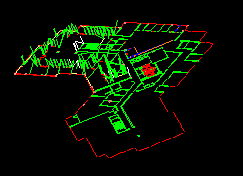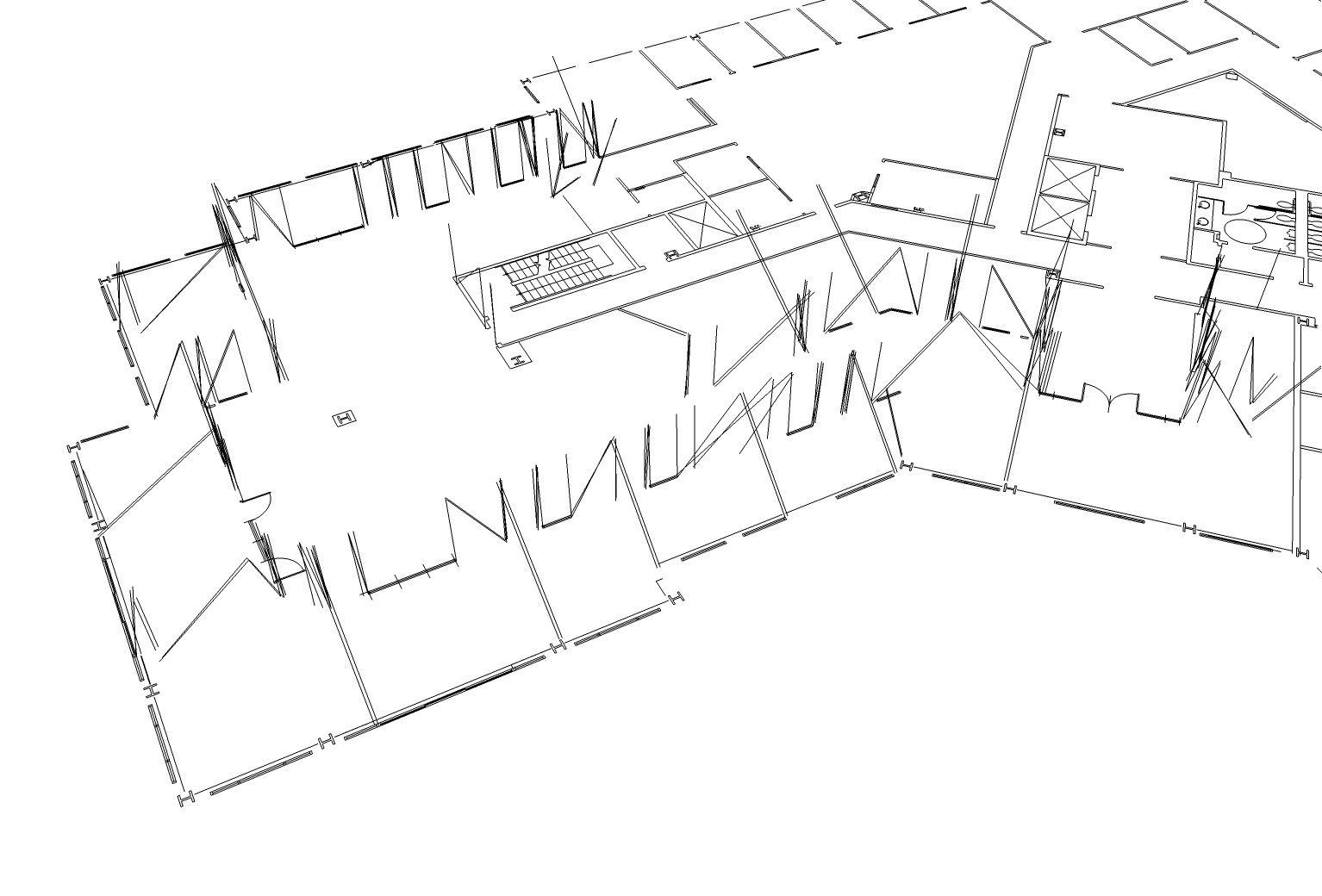[Plugin] Dxf_In v2.2 20110517 Dxf2Skp
-
Minor update including facing circles when user option to face polylines is selected (v15), and streamlining the readability of the code (v16).
-
Hello Honoluludesktop...First THANK YOU..for this great plug-in..
my DXF when imported to SKU8 comes flat i.e. the Z height comes at zero..yet when I imported to the 7.1 version comes with the right heights..?
Thanks in advance for your input.. -
Can you post the dxf here? The only Dxf_In entities that default to z=0 are LWPolylines.
-
Hmmmmm..... The dxf reference has a LWPolyline code "elevation" that I had not previously taken into account. Try the attached Dxf_In, and let me know if it works or not. Don't forget to post your dxf file.
-
HHF, This is the file as translated by an Acad Viewer. The viewer is v2000. I also read the dxf file, and couldn't find the kind of information used to update Dxf_In_v1.18 as part of the new file's entities. Perhaps you shouldn't explode the drawing, and just export it to Dxf as is. Which version of Acad did you use to make the dxf?

-
Hello Honoluludesktop..
Not exploding the file was good advice ...it came out nice, ..to answer your question the prefered sofware is Datacad (to me it is more powerful than Autocad..sorry guys!!). It can export any file to DWG and DXF format latest versions..in this instance DXF was saved to version 2002
Thanks again for this wonderful Plug-In it gave me a lot of possiblities...please enjoy your holidays!! -
I tried v1.17..it did not work either..I am also attaching the DXF ..look forward for your comments...Thanks,
-
Aloha!..it worked ! ..however I tried a more complex file and it did not come out right (picture #2) I exploded every line before converting to DXF and may have missed something in the midst... I am attaching the the new DXF for your review..
Thank you again for all your input..Happy Holidays..

-
First off thanks for the import utility!
Been trying to import a dxf from stock drive products of a timing pulley. Unfortunately only 1 line in the drawing makes it. Did not get any errors or unsupported entities so not exactly sure what happened...
Can you take a look at it?
(image of the part and dxf attached.)
-
Hi wireb, I do not see the image or file. Btw, what version of Dxf_In did you use?
-
Version 1.18 and not sure why I cannot attach anything.
Here is a link to the cad download page for the part I am trying to import.
http://catalog.catalogds.com/catalog/showPart?mfid=sdp&pn=A+6Z+3-78SF03716
i chose the "DXF file (.dxf)" option.
I also verified I can open the file in a dxf viewer so 99% sure the copy I have is good.Thanks again for taking a look. It's a simple part so can draw from scratch if I need to. But use quite a few parts from them so would be nice if I could get them to import so I have a base to draw from.
-
wireb, The dxf is a database with 2d entities created by pro/engineer as ACAD Dxf version 14.
999 Pro/ENGINEER 2005030 by Parametric Technology Corporation . . $ACADVER 1 AC1014
In the attached portion regarding a LINE from the Dxf file, note the sequence of tags 10, 20, 11, 21. These are probably coordinates from the start of the line x,y to its end x,y. Dxf_In supports and Acad Dxf v14 requires for LINE, 10, 20, 30, 11, 21, 31 (start at x,y,z to end at x,y,z).0 LINE 5 212 100 AcDbEntity 8 DEFAULT_2 100 AcDbLine 62 8 6 HIDDEN 10 11.9420742236 20 13.5330979028 11 11.9201184463 21 13.4944728974 0
I guess the reader you used overlooks this. One Acad viewer I tried rejects the file, and another non-acad viewer produced the attached 3d view of the file. Is it correct?

Notice how the model is floating above x=0,y=0,z=0 origin? Is that also correct? If there is any possibility for Dxf_In to accommodate this file, I need to know what it should look like. Finally, your Dxf includes the entity SPLINE, that Sketchup doesn't support. Dxf_In would have to change it into a polyline (a line segment made up of many stright lines) to import it. Is this OK?Btw, I think the reason you can not upload files is that as a new user, you are being temporarily blocked from uploading just in case you are a spam. Ask admin to turn on your privileges.
-
Yep that looks like the part (cog belt pulley (only 2 teeth are shown)
Segmented lines are fine by me. I can go in and touch them up manually while I am turning the 2d drawing back into a 3d part.
I think the z axis is undefined since this is a 2d print. You can lay it out at z=0 (or any value for that mater) The print is going to get cut down to just that center part (big circle) then pushed / pulled back into the 3d part. So will be moved around quite a bit.
Thanks much for taking a look at this!!
-
Yep got it and it works great. Made one change so the menu item comes up as import 2D DXF so I can have both loaded at once.
Looks like the spline were only used in the lettering and the isso view of the part and for some reason the set screw hole (no idea why that one is). The flat parts all imported with no issues other than the dotted hidden lines came in solid which is a non issue for what I am going to use it for.
after a little pushing and pulling (and manually adding the set screw hole back)

Thanks again for the help!
-
Little fix:
line 58 should be changed toext_name = name_parts[name_parts.length-1].upcase -
Honoluludesktop,
I just found your plugin and it is what I've been looking for. I appreciate your sharing it with other users. I generate surfaces in my own program and write out a dxf file using 3dface entities. The old version of SU free read them nicely allowing me to view them in 3D. I downloaded your plugin but it isn't working for me yet. It shows on the menu under file and brings up the browser. However, I get a message "<Error> or Empty File" which I see comes from the plugin. Is there a SU setting that I'm missing or something that I may not be doing correctly?
I've attached a small sample file of the type I'm generating.
Thanks for any help,
dsct
-
ttrraa trata, thanks.
dsct, I am looking at the file.
-
dsct, TestFile.dxf contains 5 3DFACEs. The file doesn't follow the Acad specification and among other things, contains no Dxf header, no indentations for the entity codes, and 3DFACE is written "3dface" in lowercase. It will not open in a AutoCad viewer.

I believe that SU uses ODA's code for reading dxf. This translator, unlike AutoCad's translator contains workarounds for many non conforming entity codes.SUv7/ODA translates TestFile with 10 faces, scale's entities in feet, and locates the model on the ground plane.

Attached is a variant of Dxf_In that will read 3DFACEs in lower case. It translates TestFile.dxf with 5 faces, default scale in inches (may be changed in the options menu), and a elevated z axis. dxf_In_v1.18b.rb I do not know which import is more correct.
I do not know which import is more correct.Unlike the ODA, I am not incline to correct all non conforming entity codes. Because Dxf_In is a SU plugin, these corrections will slow down the program, and be less compatible with future Autocad dxf releases. Having said that, I have made changes to Dxf_In to correct some non conforming entity codes.
I will do further testing, and post any findings here. Where did you get the Dxf from? Hope that the Dxf_In variant helps you.
-
dsct, I have looked hard at TestFile.dxf, and can not find a z coordinate value following its entity code (30, 31, 32, 33) that is "0.0", which would be the case as the image of the SUv7/ODA import suggest.

-
HHF, Give this a try:
Ruby Removed, download from here.

This works with the dxf you supplied. If you come across other dxf files with entities that fail translation, please post them here. Read the application's help, there are some entities that are outside my ability to convert.I hate Dxf, it provides several ways to do the same thing, resulting in increasing the difficulty for 3d party applications to comply. My code is resonably organized, resulting in the attached fix.
Advertisement







